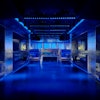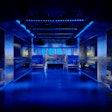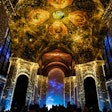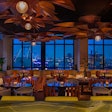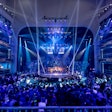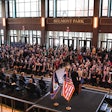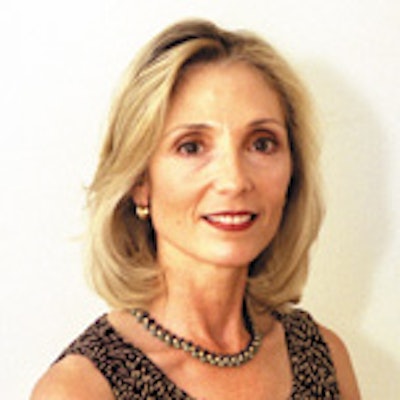
Title: Director
What She Plans: The week-long New York International Auto Show, with its numerous press conferences, celebrity appearances and media events, which attracted 1.3 million attendees (more than any show in New York) and generated $187 million last year in revenue for New York. "People plan their vacations around this show," she says. (This year's runs April 18 to 27.)
How Long She's Been Doing It: 12 years
Budget: More than $5 million
Staff: Four employees throughout the year; during show time she has about 20 staffers.
Favorite Magazines: People and Automotive News
Favorite Drink at an Event: Perrier with lime
Nights Out Each Week: Three to four times a week
College Major: Business administration with a marketing concentration
Where She Lives: Roslyn, Long Island
How Long She Has Lived in New York: 25 years
What would you consider the most challenging part of your job?
The Javits Center itself. This show can be probably, without exaggerating, nearly twice as big as the available floor space. To confine a company like General Motors—one of the largest companies in the world—to a few thousand square feet doesn't translate well into the real world. We're discussing plans for an expansion with the Javits Center that calls for doubling the main level, and I hope it moves from the drawing board to reality, and they break ground as soon as possible.
What about designing the booths? How complex is that?
Very. That's the most time consuming. A company will rarely do exactly what they did the year before. I may be dealing with several companies for the same manufacturer. And the Javits Center is very strict—rightly so—on their fire laws, so I can only work within a particular grid that allows access for emergency equipment. The manufacturers are spending millions of dollars each to do this in New York. You want to make sure what you approve really will work, so the fire marshal doesn't come in and say, "You have to move this in five feet." That may sound easy on paper, but that would be awful if it happened. And luckily it hasn't.
How do you plan for a show of this size?
We're always planning—during the 2002 show we were meeting with various exhibitors about their plans for 2003. But no matter how much you plan for a show this size it has a life of its own. You do the foundation first. The floor plans can take three or four months and even then someone throws a curveball. It's like building a small city. Take care of basic planning and things just start to happen.
What kind of curveballs have you dealt with?
You always have to be ready. During the 2001 opening day we got a phone call from the Australian consulate. After determining that it was real, I was told I had to take care of Russell Crowe. They wanted me to take him around—as though I was the only one who could do it. But the mayor always comes during the opening of the show. It was the last official year that Rudy Giuliani was mayor and I really wanted to walk the show with him. So I asked if Russell could come a little later. No, he's coming now, they told me. So now I had the mayor and Russell Crowe, and I had to divide my time between the two of them. But Russell Crowe did end up buying two cars.
So how did Giuliani feel about sharing you with Crowe?
He didn't know he was [sharing me]—that's how I gauged the success of the whole thing.
How have you helped turn what was once just a regional show into a worldwide event?
When I came on board there were some negative feelings between show exhibitors and management, so we needed to make sure they knew we were getting their product out there in the best way possible. We also had to tout the show—no one g.phped the marketing benefit of New York. We have advertising companies, the financial district, and a huge market that buys cars. We marketed the show using things in our backyard. For example, for the past six years we've worked with the Wall Street community to hold an awards dinner recognizing the best performing automotive and automotive supplier stock. We've raised the prestige of the show in the eyes of the manufacturer because we've tied them to an important part of their business—the financial community.
Do you have a preferred list of vendors you work with?
We try out companies often—no one is an official vendor forever. You have to prove yourself and we're always making sure our customers are not being taken advantage of.
Do you have any vendor peeves?
Cost. New York is a great town, but it's one of the most expensive cities to do business in so I'm always looking at cost structures and getting value and being able to pass that value on to my clients.
What has been your best discovery?
ETickets. We started it last year. Unfortunately we did it only a month or two before the show so I had no time to promote it. But we sold about 25,000 ETickets and only had it on our site for two weeks. The consumer prints out the ticket and they don't have to wait on line, which can be daunting considering the number of people who come. It's easy for the consumer; it's easy for us. And we can use the ticket to promote sponsorships.
What's the best advice for planning an event this big?
Remain calm, always. We've been in some situations where you're going against the clock and building a high wall and you're five feet from the ceiling and the crane is bringing the last block up and you don't know if it's going to fit. My motto is "There are no problems; there are only solutions."
Posted 04.16.03
Photo by Anna Persson for BiZBash.
This story originally appeared in the Winter 2002 issue of the BiZBash Event Style Reporter newspaper.
What She Plans: The week-long New York International Auto Show, with its numerous press conferences, celebrity appearances and media events, which attracted 1.3 million attendees (more than any show in New York) and generated $187 million last year in revenue for New York. "People plan their vacations around this show," she says. (This year's runs April 18 to 27.)
How Long She's Been Doing It: 12 years
Budget: More than $5 million
Staff: Four employees throughout the year; during show time she has about 20 staffers.
Favorite Magazines: People and Automotive News
Favorite Drink at an Event: Perrier with lime
Nights Out Each Week: Three to four times a week
College Major: Business administration with a marketing concentration
Where She Lives: Roslyn, Long Island
How Long She Has Lived in New York: 25 years
What would you consider the most challenging part of your job?
The Javits Center itself. This show can be probably, without exaggerating, nearly twice as big as the available floor space. To confine a company like General Motors—one of the largest companies in the world—to a few thousand square feet doesn't translate well into the real world. We're discussing plans for an expansion with the Javits Center that calls for doubling the main level, and I hope it moves from the drawing board to reality, and they break ground as soon as possible.
What about designing the booths? How complex is that?
Very. That's the most time consuming. A company will rarely do exactly what they did the year before. I may be dealing with several companies for the same manufacturer. And the Javits Center is very strict—rightly so—on their fire laws, so I can only work within a particular grid that allows access for emergency equipment. The manufacturers are spending millions of dollars each to do this in New York. You want to make sure what you approve really will work, so the fire marshal doesn't come in and say, "You have to move this in five feet." That may sound easy on paper, but that would be awful if it happened. And luckily it hasn't.
How do you plan for a show of this size?
We're always planning—during the 2002 show we were meeting with various exhibitors about their plans for 2003. But no matter how much you plan for a show this size it has a life of its own. You do the foundation first. The floor plans can take three or four months and even then someone throws a curveball. It's like building a small city. Take care of basic planning and things just start to happen.
What kind of curveballs have you dealt with?
You always have to be ready. During the 2001 opening day we got a phone call from the Australian consulate. After determining that it was real, I was told I had to take care of Russell Crowe. They wanted me to take him around—as though I was the only one who could do it. But the mayor always comes during the opening of the show. It was the last official year that Rudy Giuliani was mayor and I really wanted to walk the show with him. So I asked if Russell could come a little later. No, he's coming now, they told me. So now I had the mayor and Russell Crowe, and I had to divide my time between the two of them. But Russell Crowe did end up buying two cars.
So how did Giuliani feel about sharing you with Crowe?
He didn't know he was [sharing me]—that's how I gauged the success of the whole thing.
How have you helped turn what was once just a regional show into a worldwide event?
When I came on board there were some negative feelings between show exhibitors and management, so we needed to make sure they knew we were getting their product out there in the best way possible. We also had to tout the show—no one g.phped the marketing benefit of New York. We have advertising companies, the financial district, and a huge market that buys cars. We marketed the show using things in our backyard. For example, for the past six years we've worked with the Wall Street community to hold an awards dinner recognizing the best performing automotive and automotive supplier stock. We've raised the prestige of the show in the eyes of the manufacturer because we've tied them to an important part of their business—the financial community.
Do you have a preferred list of vendors you work with?
We try out companies often—no one is an official vendor forever. You have to prove yourself and we're always making sure our customers are not being taken advantage of.
Do you have any vendor peeves?
Cost. New York is a great town, but it's one of the most expensive cities to do business in so I'm always looking at cost structures and getting value and being able to pass that value on to my clients.
What has been your best discovery?
ETickets. We started it last year. Unfortunately we did it only a month or two before the show so I had no time to promote it. But we sold about 25,000 ETickets and only had it on our site for two weeks. The consumer prints out the ticket and they don't have to wait on line, which can be daunting considering the number of people who come. It's easy for the consumer; it's easy for us. And we can use the ticket to promote sponsorships.
What's the best advice for planning an event this big?
Remain calm, always. We've been in some situations where you're going against the clock and building a high wall and you're five feet from the ceiling and the crane is bringing the last block up and you don't know if it's going to fit. My motto is "There are no problems; there are only solutions."
Posted 04.16.03
Photo by Anna Persson for BiZBash.
This story originally appeared in the Winter 2002 issue of the BiZBash Event Style Reporter newspaper.

